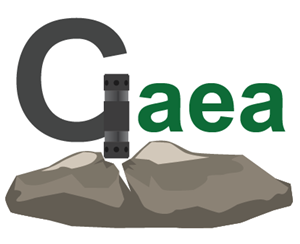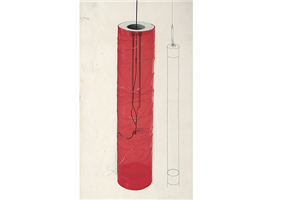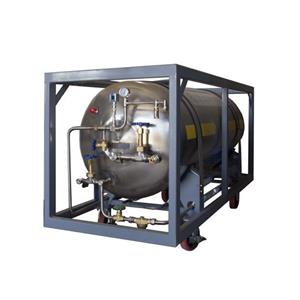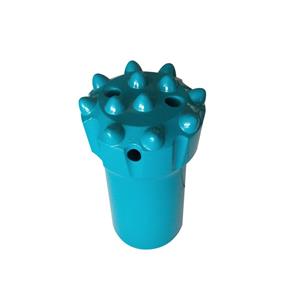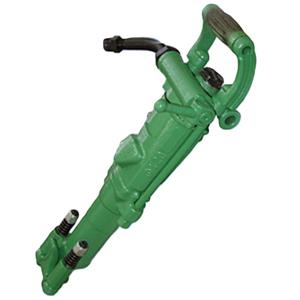O quanto você sabe sobre gerenciamento de segurança na construção de túneis?
As operações de escavação e suporte de túneis são os elos centrais da estabilidade estrutural da engenharia subterrânea e da segurança da construção. Lidar com precisão e adequadamente com os elos-chave da gestão da segurança da construção de túneis é de grande e insubstituível importância para garantir o bom andamento do projeto e proteger eficazmente a vida das pessoas.
Questão 1
Quais são os requisitos para escavação e proteção de taludes laterais e posteriores de túneis?
① Antes de escavar a entrada do túnel, o corte circular e a vala de drenagem devem ser concluídos primeiro.
2. A entrada do túnel deve ser escavada de cima para baixo em camadas e protegida em camadas. Não é permitida a escavação de fundo ou sobreposição; para pedras, utiliza-se detonação fraca controlada por furo raso.
3 Antes de entrar no túnel, as estacas antiderrapantes da entrada do túnel, os cabos de ancoragem protendidos, as redes de proteção e outros projetos relacionados à estabilidade da entrada do túnel devem ser concluídos de acordo com os requisitos do projeto.
Questão 2
Quais placas de lembrete de trabalho devem ser instaladas no layout da entrada do túnel?
Incluindo principalmente, mas não se limitando às instruções para entrar no túnel, o mapa da seção longitudinal geológica do túnel, cinco placas e um mapa, o quadro de avisos públicos de fontes de grandes riscos, o quadro de avisos de operações perigosas diárias, o quadro de sinalização de segurança, etc.
Questão 3
A entrada do túnel deve ser equipada com um centro de despacho e comando, controle inteligente de acesso de veículos e sistema de identificação de nome real do pessoal. Quais são os requisitos específicos?
A entrada do túnel deve ser equipada com um centro de despacho e comando, controle inteligente de acesso de veículos e sistema de controle de acesso de pessoal por nome real, e uma pessoa dedicada deve estar de plantão para gerenciar o sistema de nome real para as pessoas que entram e saem. A entrada do túnel deve ser equipada com uma tela eletrônica para exibir o status das pessoas no túnel em tempo real. Os túneis de gás devem realizar o monitoramento de gases tóxicos e nocivos, instalar um sistema automático de monitoramento de gás na entrada do túnel, estabelecer um posto de controle de segurança para as pessoas que entram no túnel e proibir estritamente o transporte de fogo, energia de bateria e o uso de roupas propensas à eletricidade estática na área de trabalho com gás.
Questão 4
Como configurar o ventilador de túnel?
O ventilador deve utilizar, preferencialmente, um ventilador de frequência variável com economia de energia, a uma distância de ≮ 30 m da entrada do túnel, e uma grade de ferro instalada na entrada de ar. O suporte da plataforma do ventilador é pintado com tinta refletiva ou colado com um cursor refletivo, e acima dele são afixadas placas de limite de velocidade, limite de altura e limite de largura. Quando houver gases tóxicos e nocivos no túnel, deve-se reservar um lugar extra para o ventilador. Construa uma plataforma anticolisão de 0,3 m de altura ao redor da estrutura de posicionamento do ventilador e pinte a parte externa da plataforma anticolisão com tinta amarela e preta com espaçamento de 10 cm.
Questão 5
Como configurar o compressor de ar de túnel?
A sala do compressor de ar é configurada de acordo com o plano de construção provisório, com espaçamento entre equipamentos ≮ 1 m e numerada em linha reta "". Os procedimentos de operação de segurança são afixados em cada equipamento e os registros de manutenção são afixados. Cada tanque de armazenamento de gás deve ter um certificado de registro de equipamento especial, e os acessórios de segurança devem ser verificados de acordo com os regulamentos durante o uso.
Questão 6
Quais são os principais pontos a serem observados ao configurar uma subestação para construção de túneis?
A subestação deve ser equipada com dispositivos de proteção contra raios e vento. Quando a linha de energia da subestação precisar cruzar a área de construção, a altura mínima do seu ponto mais baixo em relação à calçada e à linha de transporte deve atender aos requisitos de distância de segurança.
Questão 7
Quais são os requisitos para montar um galpão temporário de armazenamento de equipamentos mecânicos na entrada do túnel?
A área temporária de armazenamento e manutenção de equipamentos mecânicos na entrada do túnel é equipada com um galpão à prova de chuva, com telhado arqueado em telhas de aço coloridas, fundo branco e topo azul, e colunas com altura de ≮ 4,5 m (dependendo do tamanho do equipamento). Veículos de transporte e equipamentos mecânicos devem ser estacionados de forma classificada e ordenada, e não aleatoriamente.
Questão 8
Quais são os requisitos para a instalação de salas de materiais de resgate de emergência na entrada do túnel?
Salas de material de resgate de emergência devem ser instaladas em locais apropriados na entrada do túnel. As casas devem ser casas móveis de madeira, sem paredes frontais, e a frente deve ser fechada com cercas móveis de aço inoxidável de 1,2 m de altura. Uma placa de sinalização ""Emergency Material Area"" deve ser instalada no corrimão, e a cor deve ser consistente com o painel de propaganda na entrada do túnel. Armazéns de material de emergência devem ser instalados em locais apropriados na entrada do túnel e em túneis longos, e armários de material de emergência devem ser instalados a 20 m do carrinho de revestimento secundário e da face. Túneis com risco de lama e água repentinas devem ser equipados com equipamentos comuns de salvamento, como coletes salva-vidas e bóias salva-vidas. Os materiais de emergência devem ser determinados de acordo com as condições do canteiro de obras para garantir que as contas e os materiais sejam consistentes. Micro estações de incêndio, piscinas de incêndio e piscinas de areia devem ser instaladas na entrada do túnel, equipadas com pás, baldes de ferro e extintores de incêndio de pó seco.
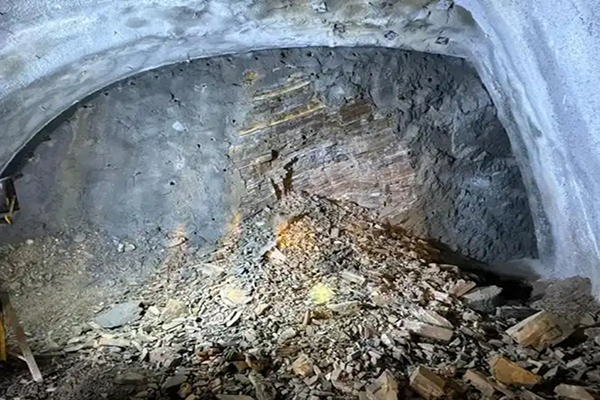
Questão 9
Quais são os requisitos para o tratamento de esgoto em túneis?
Um plano deve ser elaborado para o tratamento de esgoto, e todos os corpos de drenagem externos devem ser testados e descarregados após atender aos padrões. A entrada da caverna foi projetada para a instalação de um tanque de sedimentação de esgoto, que deve ser configurado como um tanque de sedimentação de três níveis + tanque de tratamento de óleo. O tanque de sedimentação é cercado por grades (altura ≮ 1,2 m), com uma tampa na parte superior, e o lodo é frequentemente removido para manter a drenagem desobstruída.
Questão 10
Quais são os requisitos técnicos para o uso de jateamento de energia concentrada em operações de perfuração e detonação?
Utilize a tecnologia de jateamento de energia concentrada para obter um jateamento suave ou controlado, e equipe um scanner a laser tridimensional para analisar a seção transversal, ajustar dinamicamente os parâmetros de jateamento e evitar escavações excessivas e subescavadas. A perfuração úmida deve ser utilizada para as operações de perfuração, e a construção deve estar em estrita conformidade com o projeto de perfuração e detonação.
Questão 11
Como gerenciar o processo de operação de detonação?
① Após o transporte do equipamento de detonação para o local, ele deve ser supervisionado por uma pessoa dedicada. O intervalo entre os detonadores e os explosivos é de ≮ 25 m. Uma área de alerta é instalada ao redor do equipamento e uma placa de aviso "Proibido Fogos de Artifício".
2. Os trabalhadores de carga devem usar roupas antiestáticas e usar equipamentos especiais para jateamento. Pessoas e máquinas não relacionadas devem ser evacuadas para um local seguro; operações de perfuração e carga paralelas são estritamente proibidas.
③ Após a conclusão do carregamento, o local deve ser limpo a tempo, o número de explosivos civis deve ser contado e os explosivos e detonadores restantes devem ser devolvidos ao depósito pelo pessoal que recebeu os explosivos e detonadores.
④ Ao escavar túneis não longos, a estação de detonação deve ser instalada a 50 m de distância da lateral da entrada do túnel; quando uma estação de detonação é instalada em um abrigo para carros em um túnel longo, a estação de detonação deve estar a ≮ 300 m de distância da posição de detonação.
⑤ Antes da detonação, deve-se determinar o comando, o alerta e o pessoal de detonação, dar um comando unificado e estabelecer um cordão de isolamento. Quando a distância entre as faces opostas for inferior a 3 vezes o diâmetro do túnel (ou inferior a 15 m), uma das faces de trabalho deve parar de funcionar e instalar placas de proteção e alerta de isolamento rígido fora da distância de segurança; as distâncias de segurança frontal e traseira de túneis de pequena distância na mesma direção devem atender aos requisitos de projeto; em trechos perigosos de túneis com explosão de carvão ou gás, a distância entre as faces opostas não deve ser inferior a 100 m e a mesma direção não deve ser inferior a 50 m.
⑥ After blasting, ventilation must be carried out for more than 15 minutes before two personnel are allowed to enter the blasting site for inspection. If blind shots or suspected blind shots or other residual blasting equipment are found, they should be properly handled.
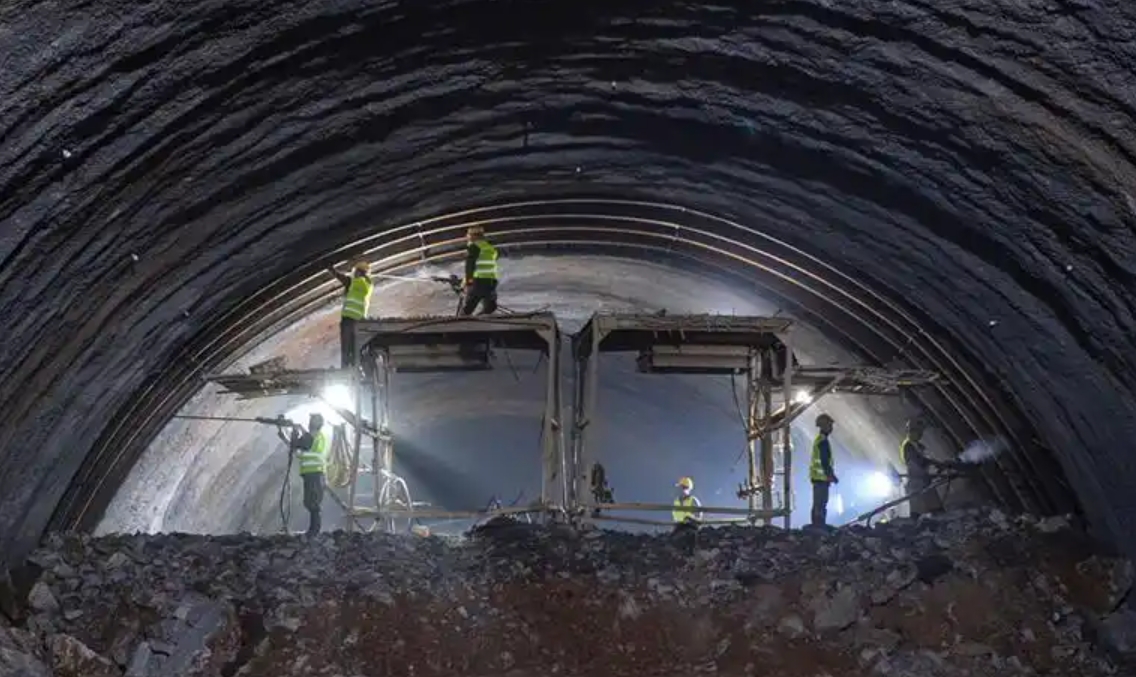
Question 12
What are the requirements for setting up edge protection for excavation steps?
When the tunnel is excavated using the step method, edge protection should be done between the upper and lower (middle) steps. Guardrails or reflective cones can be set up for protection and warning. The tunnel face is constructed using the step method, and up and down ladders with safety handrails can be set between the steps.
Question 13
How to clean sewage in the tunnel?
The clean and dirty water in the tunnel strictly follows the requirements of clean and dirty water diversion, implements clean and dirty water diversion measures, and improves clean and dirty water pipes, drainage ditches, fixed pump stations, mobile water tanks and other facilities in the tunnel; clean water is led to the clean water sedimentation tank outside the tunnel through the drainage pipe, and discharged into the surface water body after the sedimentation water quality test is qualified. The sewage of the slope tunnel is collected and pumped to the five-level sedimentation tank outside the tunnel through the centralized collection box of the face, and discharged to the sewage treatment station at the entrance of the tunnel after sedimentation and filtration in the sedimentation tank. After treatment at the sewage treatment station, it is discharged to the natural water body after meeting the standards.
① The face to the arch (bottom plate) is initially supported by clean water, and the scattered water is collected and drained through the waterproof board, and the stranded water is drained to the PVC clean water pipes on both sides or the semicircular drainage trough to the clean water collection box through the blind pipe.
② The face sewage is collected and pumped to the five-level sedimentation tank at the entrance of the tunnel through the sewage collection box, and discharged to the sewage treatment station for centralized treatment after sedimentation and filtration. It can be discharged into the river or branch ditch of Class III water quality standard only after the treatment meets the standards (PH=6-9, SS≤70mg/L).
Question 14
How to clean the sewage in the tunnel arch?
A sewage collection box is set at the end of the tunnel arch. The sewage is pumped to the sewage ditches on both sides of the low side wall by a water pump, and then discharged to the five-level sedimentation tank at the entrance. After being treated at the sewage treatment station and meeting the standards, it is discharged. The clean water in the tunnel is discharged to the central deep buried ditch through the longitudinal blind pipe at the bottom of the tunnel, and then discharged to the natural river through the drainage culvert. The primary branch seepage of the second lining forming section is collected through the PVC pipe of the low side wall drainage hole to achieve the effect of clean and dirty water diversion. The clean and dirty water of the reverse slope drainage tunnel is pumped to the tunnel entrance sewage treatment station and the tunnel entrance clean water sedimentation tank by graded relay through the clean and dirty water pump station. The sewage is treated at the sewage treatment station and discharged after meeting the standards. The clean water is precipitated in the tunnel entrance clean water sedimentation tank and then adjusted after adding drugs and discharged after meeting the standards. The treatment meets the standards (PH=6-9, SS≤70mg/L).
Question 15
What are the safety measures after the rail-mounted and wheeled steel waterproof board operation trolley is in place?
After the rail-type and wheel-type steel waterproof board operation trolley is in place, an anti-slip device must be installed, and the hydraulic support should have a locking device.
Question 16
What is the lighting power supply voltage requirement for the waterproof board trolley, lining trolley, work platform and other working areas in the tunnel?
The lighting power supply voltage for the waterproof board trolley, lining trolley, work platform and other working areas in the tunnel should not be greater than 36V. (① The lighting power supply voltage in humid and easily accessible places with charged bodies shall not be greater than 24V. ② In particularly humid places, on well-conductive ground, or in metal containers, the power supply voltage shall not be greater than 12V. ③ The lighting power supply voltage of mobile lighting devices (such as running lights) shall not be greater than 36V). The distance between the lighting fixtures on the waterproof board working surface and the waterproof board shall not be less than 50cm.
Question 17
How to set up temporary power supply in areas such as waterproof board trolleys and lining trolleys?
Temporary power supply in areas such as waterproof board trolleys and lining trolleys uses a modular integrated power distribution system, adopts angle steel processing brackets, and sets a secondary distribution box to connect multiple switch boxes. The frame size is 50cm high, the scaffolding is 100cm high, 150cm long, 50cm wide, and made of 5×5cm angle steel. The ceiling is protected by steel plates, and a set of fire extinguishers is hung to prevent water from dripping into the distribution box. (The number of distribution boxes and the frame size can be adjusted according to the actual situation on site). At least one set of fire extinguishers is configured on each side of each layer of the secondary lining, steel bars (hanging cloth), and maintenance trolley; at least one set of fire extinguishers should be separately equipped in the distribution box, special caverns, etc. The storage rack should be made uniformly in the place where the foundation of the fire extinguisher is unstable, and the size is 40*40cm (adjustable according to the actual situation).
Question 18
What notice board should be hung on the hanging cloth trolley?
The notice board for supervision of hot work is hung on the hanging cloth trolley, and the size of the signboard is 40*60cm. The hanging cloth trolley and the secondary lining trolley must be equipped with fire blankets or fireproof boards for hot work, which should be set on flammable items.
Question 19
What are the requirements for the trolley protection setting?
Trolley: Ladder and edge protection adopts fixed guardrails, and angle guardrails are used to close when passing through various platforms. The guardrails are welded with steel pipes and painted yellow; the protection height of the trolley platform and trestle is 1.2m, and the protection height of the ladder is 60cm; the edge protection of the trolley platform is installed with a skirting board of not less than 200mm, painted with black and yellow reflective paint; the main outline steel structure of the trolley is equipped with a red safety clearance light and a warning sign.
Question 20
What are the emergency measures for the safety of the second lining of the tunnel?
① Sound and light alarm and emergency shouting: sound and light alarm and shouting equipment are set on the lining trolley, and they are connected in series with the alarms at the face and the entrance. The button installation height should be convenient for use. Sound and light alarms and emergency shouting systems in the same area should be set at the same place. Gas tunnels use coal mine explosion-proof type.
② The concentrated area of the second lining trolley operation in the tunnel is equipped with no less than the on-duty operators and no less than 10 self-rescue respirators, which should be marked and easy to use.
③Secondary lining trolleys, maintenance trolleys, etc. are equipped with safety warning signs and safe operating procedures. The contents of the operating procedures must be operational. The sign size is 60*80cm. The height of the warning sign is 60cm, and the width is set according to each sign not less than 30cm wide.
